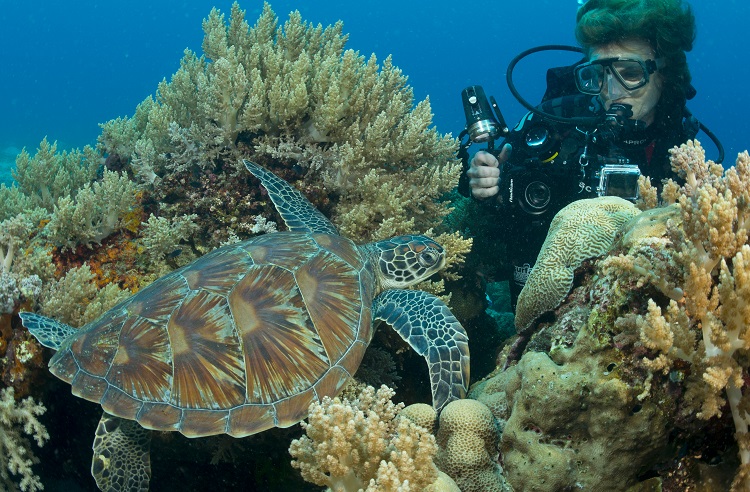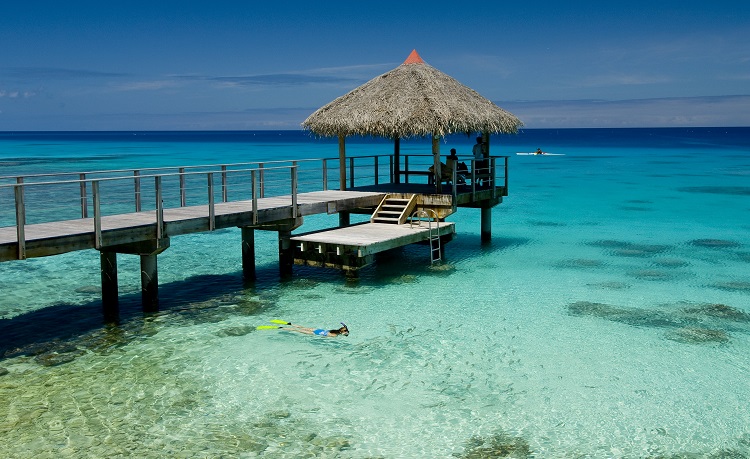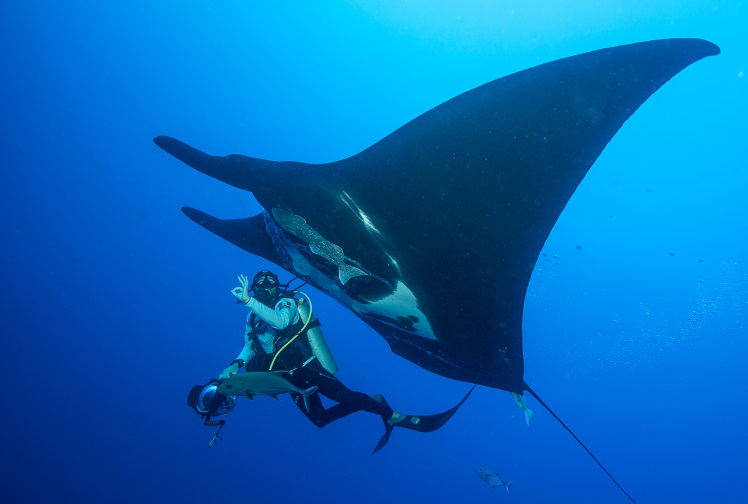Thresher Shark
10-Nov-2013 Back to Image Gallery
The sun has barely risen over the horizon and we are already descending 30 meters to the drop off on Monad Shoal, a sunken island offshore of Cebu. We pause and peer deep down into the abyss looking for them and sure enough they arrive. Long sleek silver ghost like forms materialise from the depths just at the edge of visibility. Their white faces and large black eyes remind me of Casper, the friendly ghost, and like Casper these are harmless even though they are 3.5 meter sharks. Slowly they circle and we will them to circle closer, they are here to visit their cleaning stations on the deep reef but we are alien to them and they are wary of us. One female seems more curious than her companions and I concentrate on her, it is almost as if she reads my mind as suddenly she cruises in at speed and pirouettes before my camera in a magnificent fly by until her courage fails her and one powerful flick of her massive tail propels her back into the gloom. This is day four of our week at Malapascua Island and we have been rising at 4 AM every morning to ensure we are on the deep reef at sunrise. We do this for the entire week and enjoy great sightings of the thresher sharks every dive and catch up on sleep later in the morning when other divers are out looking at coral, fish and nudibranchs! This close encounter was one of the most exceptional moments of all our dawn dives.
Photo Data: Location: Monad Shoal, Malapascua Island, Cebu, Philippines. Genre: Wide Angle Sunlight Photo Data: Nikon D800 with Nikkor 16–35mm Zoom lens, Seacam Housing & Superdome Port. Aperture Priority Exposure Mode. Sunlight Exposure ISO 2000, Aperture F4 @ 1/80th sec shutter speed. Image by Kevin Deacon
Photo Hints: Strobe or video light is not permitted as it will frighten these sharks and as the light is very poor at 30meters depth just after sunrise it is necessary to use a very high ISO setting to have enough sensitivity to get a reasonable exposure. I used 2000 – 3200 ISO during my dives and this only just gave me an acceptable exposure. I would have preferred a faster shutter speed so when I return again in the future I will try 4000 ISO. Burst mode was also valuable as subjects like this are only close enough for a good image for less than a second and hopefully one frame in the burst sequence captures the composition you want. In this case I wanted a shot that revealed the huge tail and only a few frames captured this. EQUIPMENT COMMENTS: A wide angle zoom lens is invaluable for pictures of sharks as they provide the option of changing the FOV (field of view) to suit the behaviour of your subjects. If your subject is close you can use full wide angle but if it is shy and rarely approaches close you can try the zoom to reduce the picture area. In this case I found a focal length about midway between full zoom and full wide angle to be most suitable. Always try to avoid full zoom if possible as it usually means you are shooting through too much water so your images will lack any sharp detail or definition. The 4 frames per second shooting speed of my Nikon D800 DSLR camera provided a distinct advantage in capturing the perfect moment.
Interesting Facts: Thresher sharks very rarely seen by divers and Malapascua is the only location in the World that provides reliable encounters with these sharks. The thresher sharks long tail is used like a whip to stun fish which will then be consumed by the shark. These magnificent sharks are also at risk due to shark fishing for their meat and fins.



